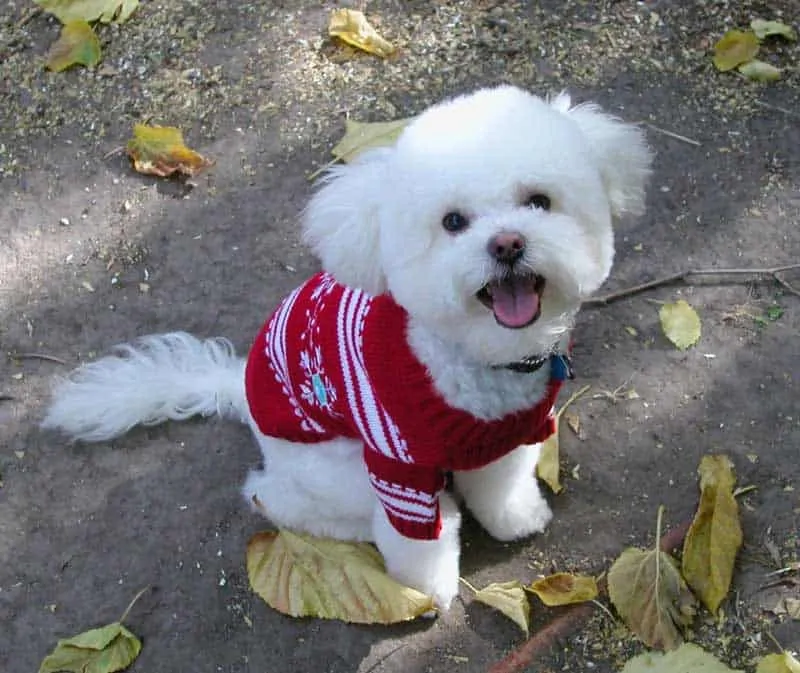7 Mesmerizing Reasons a Puppy May Have a Pink Nose?
If you’ve ever looked at your adorable puppy and wondered about their unique pink nose, you’re not alone. Many dog owners find themselves curious about this endearing trait in their canine companions. While it’s a cute feature that sets your pup apart from others, it’s essential to understand the reasons behind the pink hue of your puppy’s nose.
To say it briefly, a dog’s nose color is determined by genetics and the pigment produced in their nasal tissue. More specifically, the color of a dog’s nose depends on the concentration of melanin, a natural pigment responsible for hair, skin, and eye color in animals. Sometimes, a pink nose can be the result of less melanin production or even temporary changes in the environment.
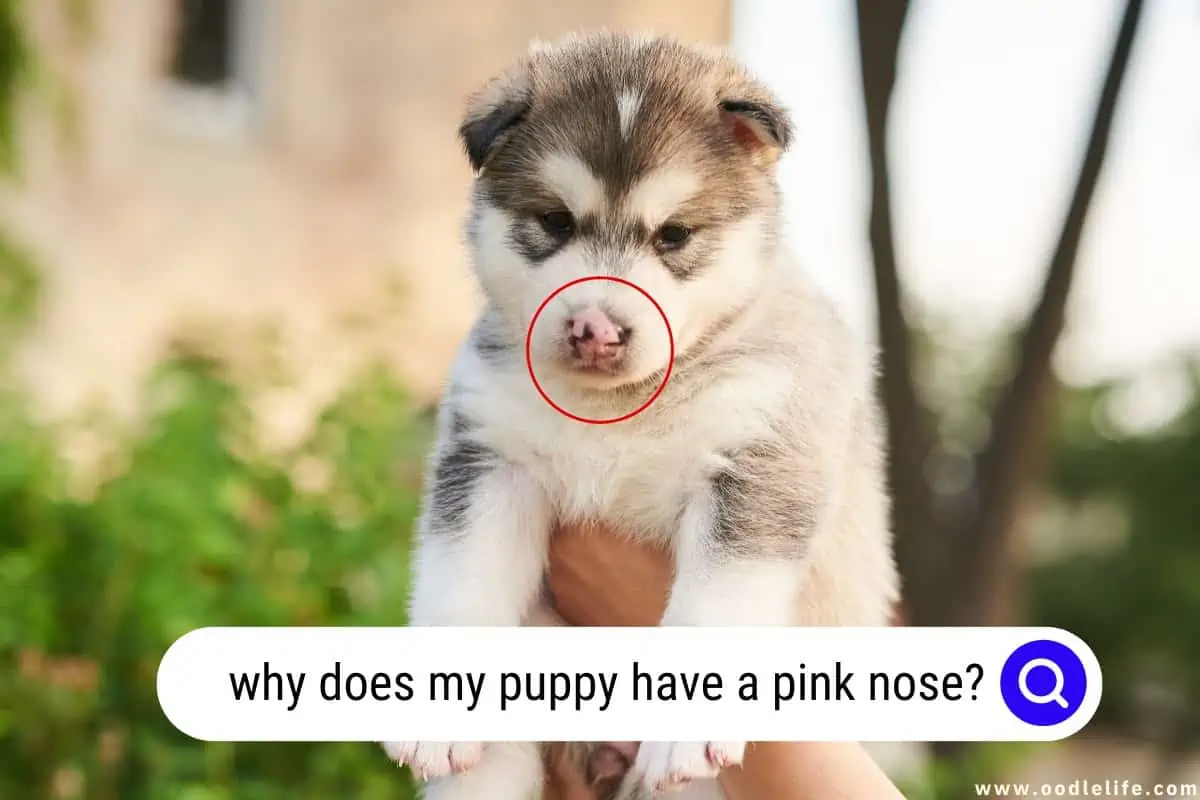
Now, don’t let your curiosity turn into worry, as a pink nose is typically not a cause for concern. It can be a normal variation among dog breeds, especially found in lighter-colored dogs and some breed-specific dogs like the Samoyed. So, sit back and admire your pup’s quirks, knowing their pink nose is all part of canine diversity.
The Role of Genetics
When it comes to our furry friends, genetics can play a significant role in determining their physical traits. If you’re the proud paw-rent of a pink-nosed puppy, don’t worry! Their cute pink nose is likely an outcome of their genetic makeup.
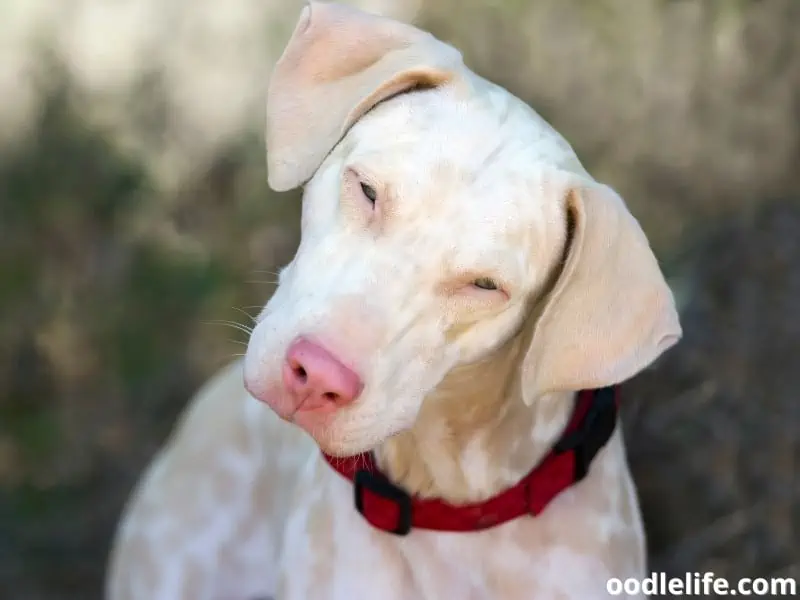
Some breeds, such as the Labrador Retriever, Golden Retriever, Dalmatian, Australian Shepherd, Bernese Mountain Dog, Maltese, and Poodle, are more prone to having pink noses. In fact, pink-nosed pups like Labrador Retrievers and Golden Retrievers are often called “Dudleys” in the dog community – talk about a unique name, huh?
Now, let’s dive into the nitty-gritty. Genes are responsible for dictating the color of a dog’s nose, coat, and other physical features. Specific genes determine the amount and type of pigmentation that will be displayed in a dog’s skin and hair. For our pink-nosed pups, genetics may have inclined them to have lesser pigmentation in their nose.
You see, a dog’s nose color might change during their puppyhood. Many puppies are born with a pink nose, which might darken as they grow up. It’s like those childhood freckles that faded away – except we’re talking about doggie noses!
However, it’s noteworthy that sometimes, the pink nose isn’t solely determined by genetics. Other factors like sunlight exposure, winter nose (or ‘snow nose’), and even aging can contribute to a pink nose. But if your pup is predisposed to lighter pigmentation due to their genetics, these factors might make it more noticeable.
To summarize, genetics can be one of the primary factors that contribute to a dog’s pink nose. If your pupper happens to belong to a breed with a predisposition for lighter pigmentation, consider it a charming quirk that sets them apart from the pack. Now go ahead and boop that pink snoot with pride!
Pigmentation and Color Changes
Ah, the curious case of the pink-nosed puppy! Don’t fret, this phenomenon has a scientific explanation. Let’s dive into the world of pigmentation, where melanin and enzymes determine the color of your fluffy friend’s nose.
Pigmentation in dogs’ noses is largely determined by melanin, a pigment responsible for their color. This pigment is produced by an enzyme called tyrosinase. A dog’s nose color can range from pink to brown or even spotted, depending on the amount and distribution of melanin.
Sometimes, puppies are born with pink noses because their melanin production hasn’t kicked into full gear just yet. As they grow older, enzymes like tyrosinase start to work their magic, and voila! Those pink noses gradually darken.
It’s like watching an artist paint a masterpiece on a tiny, wet snout.
However, not all pink noses turn darker as some breeds are prone to certain pigment-related conditions. For instance, a “Dudley nose” is when a dog has a flesh-colored nose, often seen in Labrador Retrievers. On the other hand, a “liver nose” is a chocolate brown color, common in pointer breeds.
There are also cases of hypopigmentation, when a dog’s nose loses pigment over time, resulting in a lighter color. In contrast, hyperpigmentation is when the nose gets darker due to an increase in melanin. You could say noses are the mood rings of the canine world!
In conclusion, your puppy’s pink nose may be temporary, or it could be its permanent color. Either way, a pink-nosed pup is just as lovable and irresistible as any other. After all, it’s not the color of the nose that matters—it’s the wet kisses and sniffing adventures that count!
Age-Related Pink Noses
A pink nose on a puppy can be quite common, especially in the early stages of their life. As they age, their noses may change color due to various factors. Let’s dive into the wonderful world of canine noses!
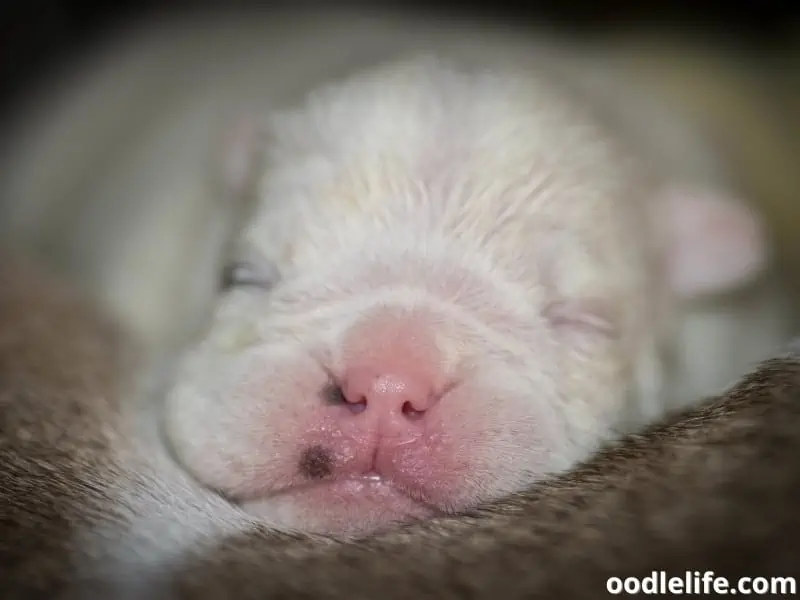
Some breeds, like Golden Retrievers, Bernese Mountain Dogs, and Siberian Huskies, are known for having pink noses when they’re young. As they age, their noses may darken and change color. Just like a fine wine, these puppies’ noses mature over time.
But why does this change in color happen? One of the reasons is the so-called “butterfly nose” which occurs as the puppy’s skin and cells age. This is a normal part of the aging process for our furry friends, and not something to be concerned about.
In some cases, a pink nose might only be temporary. For example, if your puppy has been playing in the sun or digging in the dirt, their nose may appear pinker due to the skin being thinner and more vulnerable to irritation. Fear not, their nose will likely return to its normal color after a bit of rest and relaxation.
In conclusion, age plays a significant role in the color of a puppy’s nose. As they grow and experience all that life has to offer, their noses will change along with them, reflecting their maturity and wisdom. So, if you find yourself with a pink-nosed puppy, fear not, for they are simply growing and experiencing the beautiful journey of life!
Environmental Factors
When it comes to puppies with pink noses, several environmental factors come into play. For instance, some pups may experience snow nose or winter nose, a temporary color change caused by cold climates.
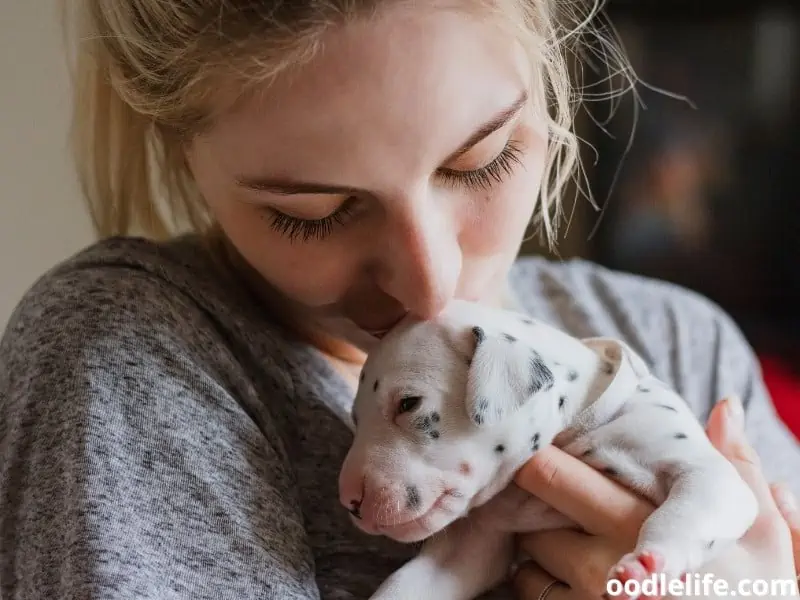
During the winter months, a puppy’s nose might turn pink as temperatures drop. It’s nature’s way of saying, “Brrr, it’s chilly out here!” The good news is, once summer rolls around, that adorable pink nose often returns to its original color.
Speaking of summer, sunlight and temperature also play a role. Just like us humans, puppies need their daily dose of vitamin D from the sun. However, too much sun exposure can lead to a bit of a sunburn on their sensitive noses, causing pinkness.
It’s crucial to monitor your pup’s time in the sun and apply pet-safe sunscreen, if needed. You wouldn’t want your furry friend to catch a case of the Snoot Sunburn, would you?
On the flip side, puppies who spend most of their time indoors might also develop a pink nose, as less exposure to sunlight might prevent melanocytes (pigment-producing cells) from being active. Picture those melanocytes having a lazy day at home, sipping a doggy daiquiri – no work, no color!
In short, whether it’s because of winter chills or summer thrills, your puppy’s pink nose can likely be attributed to a variety of environmental factors. Just remember to keep an eye on your pup’s sun and temperature exposure, so you can ensure their cute little snoot stays as healthy and colorful as possible!
Health Considerations
When it comes to your puppy with a pink nose, there are several potential health considerations to be aware of. While a pink nose in itself might not be a cause for alarm, it’s essential to stay well-informed and vigilant to ensure your furry friend remains in optimal health.
Allergies and Infections: Just like humans, puppies can experience allergies, which might cause a temporary change in their nose color. This can lead to sneezing and nasal discharge as well. In some cases, a bacterial infection might be at play, contributing to the pink hue on their snout.
Autoimmune Diseases and Depigmentation: On a more serious note, a pink nose may indicate the presence of an autoimmune disease. One such condition is vitiligo, which leads to pigmentation loss on various parts of the body, including the nose. While vitiligo itself is not life-threatening, it can signal an underlying issue, so monitoring your pup’s skin condition is crucial.
Cancer and Skin Conditions: A pink nose might also be related to skin cancer, particularly if you have a breed with a predisposition to sunburns and skin damage. Ensuring that your pup stays protected during the sunniest parts of the day can help in preventing any potential health issues.
Now, we don’t want to be overly dramatic, but knowledge is power – or at least it can help you better understand your pup’s pink schnoz. So, the next time your dog gives you that adorably confused head tilt, you can confidently say, “Don’t worry, buddy! We’ve got your nose in our list of priorities.”
Nose Care and Protection
Taking proper care of your puppy’s pink nose is essential to prevent sunburn and other injuries. Although a little sun won’t hurt, excessive sun exposure can lead to sunburn and other skin issues. So, it’s time to bust out your furry friend’s sun hat, grab a good book, and lounge in the shade together!

First things first, limit your puppy’s time outdoors during peak sun hours, which are usually around 10 am to 4 pm. If you must take them out, make sure there’s always some shade nearby. Just as we humans need those precious shady spots, our puppies do too!
When it comes to sunscreen for puppies, choose one that’s specifically made for animals. Human sunscreen can contain chemicals that are harmful to dogs. It’s important to apply a thin layer of pet-safe sunscreen on your pup’s nose about 30-minutes before heading out. And don’t worry, it’s not a fashion faux-paw to spot a pup sporting a sunscreen-covered nose!
If you notice any signs of a sunburned snout, such as red or flaky skin, bring your puppy indoors and consult with your veterinarian for treatment advice. Remember, prevention is always better than a cure, so take a proactive approach to protecting your little one’s nose from sun damage.
In the world of pee-wee pooches, a pink nose may not last forever. As your puppy matures, their once rosy snout might darken to a classic black. This natural change is purely cosmetic and nothing to fret over.
Remember to incorporate these nose care tips into your puppy’s daily routine. They’ll thank you later with an endless supply of wet nose boops, and you’ll have peace of mind knowing you’re doing your part to protect their adorable pink schnozzle.
When to Consult a Veterinarian?
It’s natural for some dog breeds to have pink noses, but occasionally, a pink nose can be a sign of underlying health issues. Confidently trust your gut – if you feel like something’s wrong with your pup’s nose, it’s worth taking them to see a veterinarian.
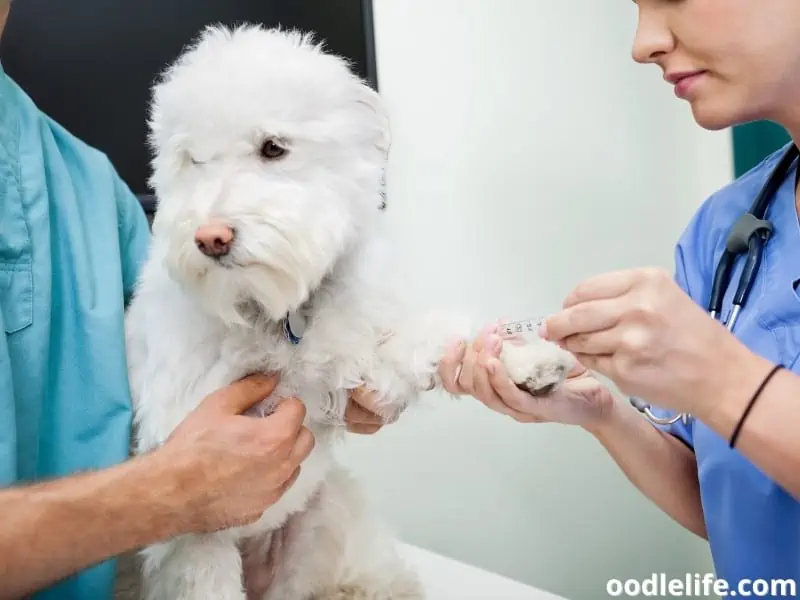
For instance, if you’ve noticed that the pinkness on your puppy’s nose is accompanied by sores or lesions, don’t hesitate to take them to the vet. A pink nose with these symptoms could be an indicator of a bacterial infection that requires medical treatment. Keep an eye out for any unusual discharge or changes in smell – these could also suggest an infection.
Another reason to visit the vet is if your puppy’s nose seems to be causing them discomfort. If you see your fur baby pawing at their nose or rubbing it against furniture, it might be time to seek professional help. The veterinarian can assess whether your puppy needs treatment or surgery to alleviate their distress.
In some cases, a pink nose might simply be a result of sun damage. If your puppy loves sunbathing, their nose may have been kissed by the sun one too many times. To avoid further complications, have a veterinarian perform a quick check-up to ensure no harm has been done.
Remember that your vet is a specialist when it comes to your puppy’s well-being. So, chuckle at your pup’s adorable pink nose, but don’t shy away from asking for support when needed. Remember, keeping your puppy’s nose healthy is just as important as keeping their tail wagging!
Extras
Did you know that your puppy’s pink nose might be related to their paw pads? Yup, just like their cute little paws, their nose can also change color. This is quite common in breeds like the English Bulldog.
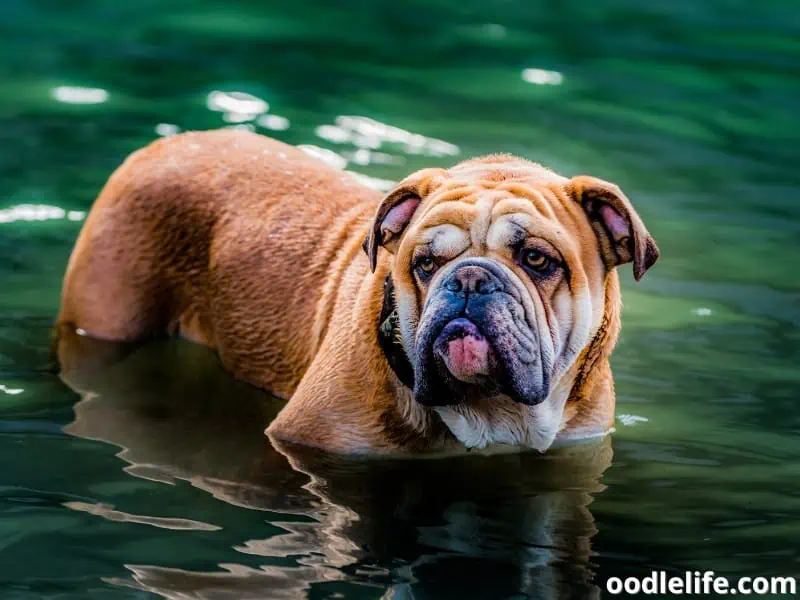
Their noses can have a butterfly pattern, where it’s a mix of black and pink.
Now, let’s talk about those dog bowls. Choosing the right material for your puppy’s bowl is important. Plastic bowls might be cheap and convenient, but they can affect your dog’s nose color.
So, it’s better to go with ceramic or stainless steel options. Not only they keep your puppy’s nose healthy, but they’re also easier to clean!
Nutrition plays a vital role in your doggo’s nose color too. A well-balanced diet can help maintain their pigmentation. Make sure you’re feeding them high-quality food, and don’t be shy to ask your vet for advice.
Here’s a fun fact: Dogs can develop temporary pink noses from napping! Just as humans, they sometimes press their noses against surfaces while sleeping. This can cause some temporary “depigmentation,” which typically resolves on its own.
So there you go, your puppy’s pink nose can be influenced by factors like breed, paw pads, type of dog bowls, and nutrition. Keep your pupper’s nose in mind while making decisions, and let their pink nose be the talk of the dog park!

